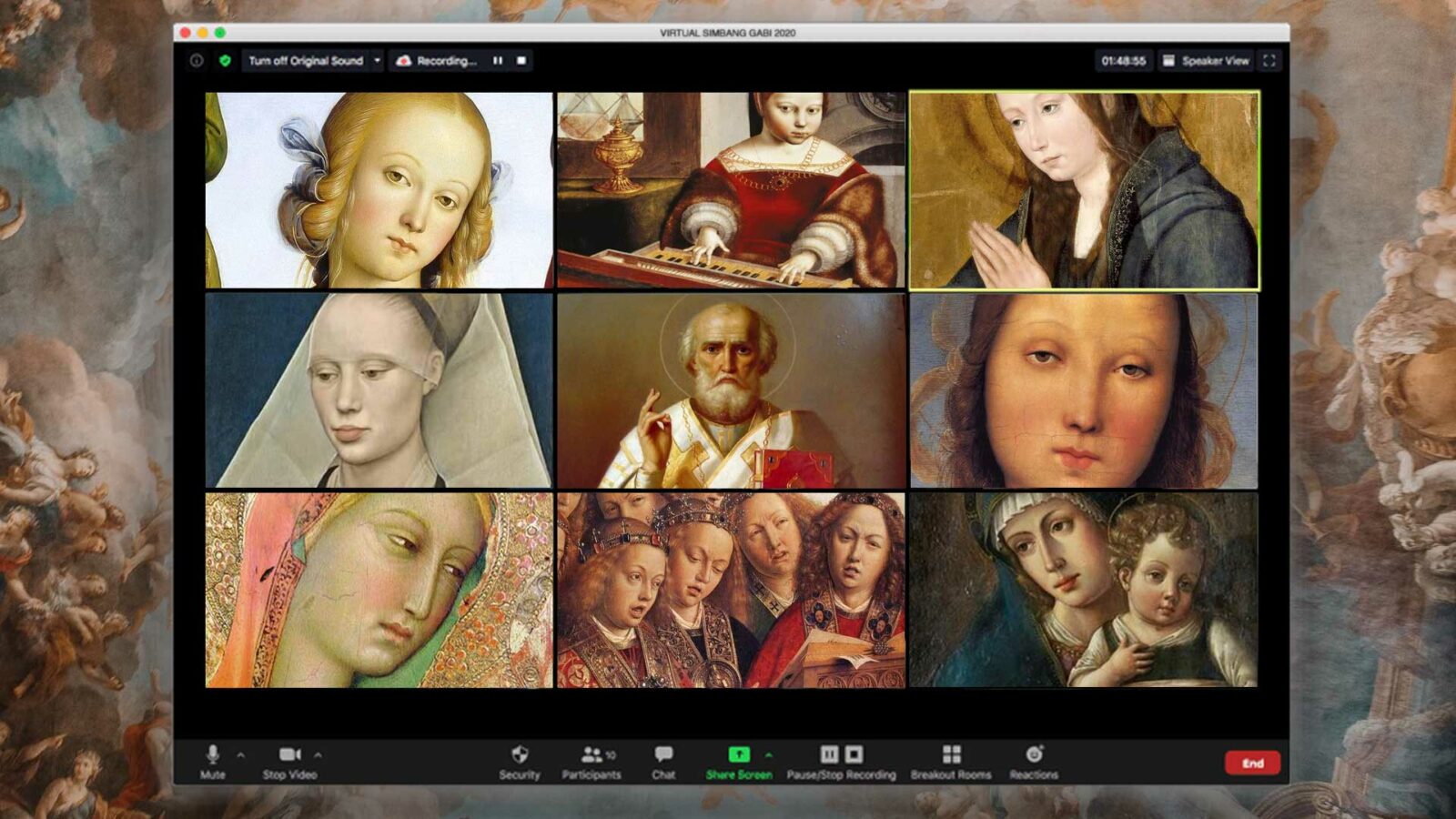While protocols and distance have to be still observed and maintained, this writer introspects on the virtual aspect of the mass, especially during Simbang Gabi.
Related: THE STATE OF EDUCATION: IS THE BLENDED LEARNING APPROACH WORKING FOR THE FILIPINO YOUTH?
Parols, Jose Mari Chan memes, and Christmas songs blasting in the malls in September aside, Simbang Gabi may be the most evocative, lauded, and beloved element of the Filipino Christmas. We all know its beginnings as the special novena mass to prepare for Christmas, specially scheduled before dawn so that the farmers could attend before heading to the fields to work. But in the modern age, for Catholics, it’s practically a Christmas party, a way to celebrate and commemorate the season (and a nice talking point at the water cooler during holiday parties—“Nag-Simbang Gabi ka na ba?”). Despite busy holiday schedules, many strive to finish all nine masses as it’s folk (but still widely held) belief that one will be granted a wish for completing the novena. Mass goers rub the sleep out of their eyes as they walk into the Church, looking forward to basking in the grand décor, listening to choirs sing their best carols, and enjoying a piping hot serving of bibingka and puto bumbong after. It’s even become a not-so-secret tactic for young suitors to take their intended jowas to Simbang Gabi, often to subtly show off their faithful Catholicism and commitment, as well as to extend their sweet time together during the jam-packed season.
But, as with everything else, this changed because of COVID-19.
I’ve been celebrating Simbang Gabi for many years, and for the first time, gone are the décor, the guest choirs sneaking a caroling session before the Final Blessing to ask for donations, the Simbang Ga-Babes excitedly reaching for their date’s hand during Our Father, and the bibingka stands. All that remains is my Parish Priest on Facebook Live, just as he has been in all Sundays since March 2020. All that remains is the actual but virtual celebration of the Holy Eucharist.
As of the time of this writing, I’ve finished five masses. It’s become a bit easier to go to Simbang Gabi because it’s virtual. Pre-COVID-19, the holidays always meant endless parties, reunions, and last-minute shopping errands (remember the bygone days when malls would extend their hours to midnight in the weeks leading to Christmas?), so finishing the nine masses was always a bit of a challenge. One usually had to schedule a mixture of morning and anticipated masses in the evenings to ensure the completion of all masses; now, it’s a matter of opening a tab on Google Chrome exactly when the mass is schedule to begin. No rushing, driving through Christmas traffic, fighting over parking, or squeezing your way through a sea of mass goers to try and find a seat. The hassle and stress are gone.
At the same time, “going” to virtual Simbang Gabi has lost a bit of its luster and appeal because you’re seated in your own home. As all aspects of your life have bled into each other in this confined space during the world’s longest quarantine, no experience is left distinct or special. How can you cherish and relish this Christmas tradition when you’re in the same place where you eat, work, sleep, and pretty much do everything else? I haven’t mentioned how easy it is to get distracted by notifications on your computer, or your Dad popping in to ask how to log in to Zoom yet again. Some people may wonder if there’s any point to watching Simbang Gabi virtually.
But after finishing more than half of the novena, I’m still incredibly thankful for this local tradition, and even more thankful that the Parishes all over the country have found their ways to continue masses with a safe number of people socially distanced from each other inside (and outside) the Churches, while providing live streaming options for those who prefer to stay safe at home. I love the carbs, carols, and all the other Christmas details that make Simbang Gabi, but the Misa de Gallo is a nine-day spiritual preparation for the day Jesus Christ was born. In mass, we hear about the history that led to the birth of Christ, as well as reflect on its impact and significance to the people back then and to us now. While I’d still enjoy going to a mass physically, a virtual mass allows me to focus on the Gospel and my own reflection for Christmas. (Just need to make the effort to block out Viber notifications or my Mom crowing over her K-Dramas in the other room, but if we can do it for Zoom calls with clients, we can do it for the Holy Mass.)
Most of all, Simbang Gabi is a celebration of Filipino tradition and faith. It may be very different from the original dawn masses that farmers used to attend, but the fact that we continue to do something that started in the 1660s is absolutely mind-blowing. These days, we don’t blink when beauty companies delist a shade of eyeshadow or when Apple comes out with an iPhone every year, but we’ve been able to keep Simbang Gabi alive through centuries. During Martial Law, the dawn masses had to be canceled because of the curfew, so the Church rescheduled them to evenings, giving birth to the term “Simbang Gabi.” (Fun fact: traditionally, dawn masses are called Misa de Gallo, and you technically can’t call those masses Simbang Gabi. In the same way, evening masses can’t be called Misa de Gallo. Another name for them would be Misa de Aguinaldo.) Even Filipino communities who find themselves living in other countries have devised ways to celebrate Simbang Gabi, so COVID-19 shouldn’t stop us, either. When we go to Simbang Gabi, we keep the fire of our faith and history going.
The fact that, despite a global pandemic, we can still celebrate Simbang Gabi, is a privilege. It’s up to our generation to make the most out of this enduring Christmas gift and make sure we can also pass it on to future Filipinos. So this year, my presence may be virtual, but my faith and intentions are not. There may not be bibingka or caroling, but this Simbang Ga-babe is keeping Simbang Gabi alive this year.





